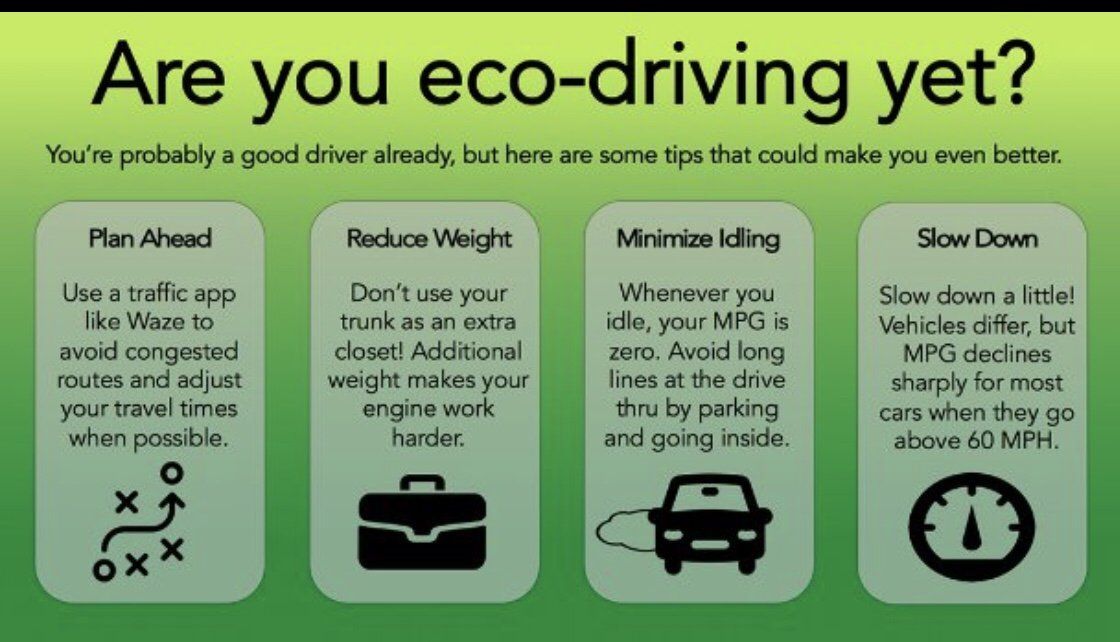
Understanding Stopping Distances: The Basics
When learning to drive, understanding stopping distances is crucial for ensuring safety on the road. Stopping distance is the total distance a vehicle travels before it comes to a complete stop after the driver perceives a hazard. It is composed of two main components: reaction distance and braking distance.
Components of Stopping Distance
Reaction Distance: This is the distance your vehicle travels from the moment you perceive a hazard until you start applying the brakes. It depends on your reaction time, which can vary based on factors such as alertness, fatigue, and distractions.
Braking Distance: This is the distance your vehicle travels from the moment the brakes are applied until it comes to a complete stop. Braking distance is influenced by factors like vehicle speed, road conditions, and the condition of your brakes and tyres.
Importance of Knowing Stopping Distance
Understanding stopping distances is essential for safe driving. It helps you maintain a safe following distance from the vehicle in front of you, reducing the risk of collisions. By knowing how far your vehicle will travel before stopping, you can make better decisions in emergency situations and adjust your driving according to road and weather conditions.
Reliable Information Sources
For reliable information on stopping distances, learners can refer to:
- The Highway Code: Provides official guidelines and stopping distance charts.
- Driving Schools: Professional instructors at Smart Drive UK can offer training and support on stopping distances.
- Educational Resources: Online calculators and interactive tools can help visualise and calculate stopping distances under various conditions.
By understanding these basics, you can enhance your driving skills and ensure safety on the road.
The Physics Behind Stopping Distances
Understanding the physics behind stopping distances is crucial for safe driving. This section will explore the role of vehicle speed, the application of physical laws, and the exponential increase in stopping distances with speed.
Role of Vehicle Speed
Vehicle speed significantly impacts stopping distance. As speed increases, both the reaction distance and braking distance increase. This is because a faster-moving vehicle covers more ground during the driver’s reaction time and requires more distance to come to a complete stop.
Laws of Physics in Stopping a Vehicle
The laws of physics, particularly Newton’s laws of motion, play a critical role in stopping a vehicle. The stopping distance is influenced by the vehicle’s momentum, which is a product of its mass and velocity. When brakes are applied, friction between the tyres and the road surface works to decelerate the vehicle, converting kinetic energy into heat.
Exponential Increase in Stopping Distance
Stopping distance increases exponentially with speed. For example, doubling the speed of a vehicle does not merely double the stopping distance; it quadruples it. This is due to the kinetic energy, where kinetic energy increases Therefore, higher speeds result in significantly longer stopping distances.
Adjusting Speed for Safe Stopping Distances
Drivers should adjust their speed to maintain safe stopping distances, especially in varying road and weather conditions. For instance, reducing speed in wet or icy conditions can help ensure that the vehicle can stop safely within a reasonable distance. Adhering to speed limits and being mindful of the driving environment are essential practices for maintaining safe stopping distances.
By understanding these principles, you can make informed decisions about your driving speed and improve your overall safety on the road.
Factors Affecting Stopping Distances
Understanding the various factors that influence stopping distances is essential for safe driving. This section will cover how road conditions, weather, vehicle maintenance, and driver behaviours impact stopping distances.
Road Conditions
Road conditions play a significant role in altering stopping distances. Factors such as road surface type, slope, and maintenance can affect the friction between the tyres and the road. For instance:
- Wet or Icy Roads: Reduced friction increases stopping distances.
- Gravel or Uneven Surfaces: Less stable surfaces can lead to longer stopping distances.
- Road Slope: Uphill slopes can shorten stopping distances, while downhill slopes can lengthen them.
Weather Conditions
Weather conditions can significantly impact stopping distances. Different weather scenarios affect the road surface and visibility, influencing how quickly a vehicle can stop:
- Rain: Wet roads reduce tyre grip, increasing stopping distances.
- Snow and Ice: Extremely slippery conditions can drastically extend stopping distances.
- Fog: Reduced visibility can delay reaction times, indirectly affecting stopping distances.
Vehicle Maintenance
Maintaining your vehicle is crucial for minimising stopping distances. Key aspects of vehicle maintenance include:
- Tyre Condition: Worn tyres have less grip, increasing stopping distances.
- Brake System: Well-maintained brakes ensure efficient stopping power.
- Suspension: Properly functioning suspension helps maintain tyre contact with the road.
Driver Behaviours
Driver behaviours can adversely affect stopping distances. Factors such as reaction time, distractions, and impairment play a role:
- Distractions: Using mobile phones or in-car entertainment can delay reaction times.
- Fatigue: Tired drivers have slower reaction times, increasing stopping distances.
- Substance Use: Alcohol and drugs impair reflexes, leading to longer stopping distances.
By understanding and managing these factors, you can improve your ability to maintain safe stopping distances and enhance overall road safety.
The Role of Vehicle Safety Features in Stopping Distances
Modern vehicle safety features play a crucial role in reducing stopping distances and enhancing overall driving safety. This section will explore how features like ABS and ESC affect stopping distances, advancements in vehicle technology, the importance of familiarising yourself with these features, and when they make a significant difference.
How ABS and ESC Affect Stopping Distances
Anti-lock Braking System (ABS): ABS prevents the wheels from locking up during braking, allowing the driver to maintain steering control. This system helps reduce stopping distances, especially on slippery surfaces, by optimising the braking force applied to each wheel.
Electronic Stability Control (ESC): ESC helps maintain vehicle stability by detecting and reducing loss of traction. It automatically applies brakes to individual wheels to prevent skidding, which can help maintain control and reduce stopping distances in emergency situations.
Advancements in Vehicle Technology
Recent advancements in vehicle technology have introduced several features that contribute to shorter stopping distances:
- Automatic Emergency Braking (AEB): AEB systems detect potential collisions and automatically apply the brakes if the driver does not respond in time.
- Brake Assist: This feature detects emergency braking and applies maximum braking force to reduce stopping distances.
- Traction Control Systems (TCS): TCS prevents wheel spin during acceleration, helping maintain control and stability, which indirectly affects stopping distances.
Importance of Familiarising Yourself with Safety Features
Learners should familiarise themselves with their vehicle’s safety features to understand how they function and how they can assist in various driving conditions. Knowing how to utilise these features effectively can enhance your driving safety and reduce the risk of accidents.
When Safety Features Make a Significant Difference
Safety features make a significant difference in adverse conditions such as wet, icy, or uneven roads. They are also crucial during emergency braking situations, where maintaining control and reducing stopping distances can prevent collisions. By understanding and leveraging these features, you can improve your overall driving safety and confidence on the road.
Practical Tips for Managing Stopping Distances
Maintaining safe stopping distances is crucial for preventing accidents and ensuring road safety. Here are some practical tips to help you manage stopping distances effectively.
Ensuring Safe Stopping Distances in Traffic
To maintain safe stopping distances in traffic, follow these guidelines:
- Observe the Two-Second or Four-Second Rule: Ensure there is a two-second gap between your vehicle and the one in front during normal dry road conditions. During wet road conditions this should be increased to a four-seconfd gap. This rule provides a buffer for reaction time and braking distance.
- Adjust for Speed: Increase the gap as your speed increases. Higher speeds require longer stopping distances.
- Stay Alert: Keep your focus on the road and avoid distractions. Being attentive allows you to react promptly to any changes in traffic conditions.
Adjusting Stopping Distances in Poor Weather
Poor weather conditions can significantly impact stopping distances. Here are strategies to adjust accordingly:
- Increase Following Distance: In wet conditions, double the two-second rule to four seconds to account for reduced traction.
- Reduce Speed: Lower your speed to improve control and reduce stopping distances.
- Use Headlights: Ensure your headlights are on to improve visibility and help other drivers see you.
Additional Tips and Resources
For more tips on managing stopping distances, consider the following resources:
- Driving Schools: Enrol in courses that emphasise safe driving practices, including stopping distances.
- Online Tools: Use online calculators and interactive tools to practice calculating stopping distances.
- Educational Materials: Access guides and videos that provide practical examples and techniques for maintaining safe stopping distances.
By following these tips and utilising available resources, you can enhance your ability to manage stopping distances and drive safely.
Immediate Actions to Reduce Stopping Distances
In critical moments, certain actions can help reduce stopping distances:
- Apply Brakes Firmly: Use firm, steady pressure on the brakes.
- Avoid Locking Wheels: If your vehicle doesn’t have ABS, pump the brakes to prevent wheel lockup.
- Steer Clear: If possible, steer to avoid obstacles while braking.
Importance of Practising Emergency Braking Techniques
Practising emergency braking techniques is vital for several reasons:
- Muscle Memory: Regular practice helps develop muscle memory, allowing for quicker and more effective responses.
- Confidence: Familiarity with emergency braking builds confidence in handling sudden situations.
- Safety: Practised drivers are more likely to execute proper braking techniques, reducing the risk of accidents.
Impact of Road and Traffic Conditions on Stopping Distances
Understanding how road and traffic conditions affect stopping distances is essential for safe driving. This section will explore the differences between urban and rural road conditions, the role of traffic density, the need for caution in high-traffic situations, and where the risks of miscalculating stopping distances are most significant.
Urban vs. Rural Road Conditions
Urban and rural road conditions can differently impact stopping distances:
- Urban Roads: Typically have more intersections, pedestrian crossings, and traffic signals. These factors require frequent stopping and starting, which can affect stopping distances.
- Rural Roads: Often have higher speed limits and fewer intersections. However, they may have less maintenance, leading to uneven surfaces and potential hazards that can increase stopping distances.
Learning to Drive with Smart Drive UK: Focusing on Stopping Distances
At Smart Drive UK, we prioritise comprehensive driver education, including a strong focus on understanding and calculating stopping distances. This section will detail how we incorporate stopping distance education into our curriculum, our unique teaching methods, the benefits of choosing Smart Drive UK, and when learners practice these essential skills.
Incorporating Stopping Distance Education
We integrate stopping distance education into our curriculum through both theoretical and practical lessons. Our instructors ensure that learners understand the components of stopping distances, including reaction time and braking distance, and how various factors influence these distances.
Unique Teaching Methods
Our teaching methods are designed to highlight the importance of stopping distances effectively:
- Interactive Lessons: We use interactive tools and visual aids to help learners grasp the concepts of stopping distances.
- Real-World Scenarios: Practical driving sessions include real-world scenarios where learners calculate and apply stopping distances.
Why Choose Smart Drive UK
Choosing Smart Drive UK for your driving education offers several advantages:
- Experienced Instructors: Our instructors are highly trained and experienced in teaching safe driving practices.
- Comprehensive Curriculum: We cover all aspects of driving, with a particular focus on safety and stopping distances.
- Personalised Learning: Lessons are tailored to meet the individual needs of each learner, ensuring a thorough understanding of stopping distances.
Practising Stopping Distances
Learners at Smart Drive UK practice calculating and applying stopping distances during various stages of their training:
- Initial Lessons: Early lessons introduce the basic concepts of stopping distances.
- Practical Driving Sessions: Learners apply their knowledge in real driving conditions, adjusting for speed, road, and weather conditions.
- Advanced Training: Later stages include advanced techniques and emergency braking practices to ensure learners are well-prepared for all driving situations.
By focusing on these key areas, Smart Drive UK ensures that learners are equipped with the knowledge and skills necessary to maintain safe stopping distances and drive safely.
Contact Us at Smart Drive UK for Expert Driving Lessons
At Smart Drive UK, we are committed to providing high-quality driving lessons that emphasise safety and skill development. If you’re ready to start your journey towards becoming a confident and competent driver, here’s how you can get in touch with us and what we offer.
How to Get in Touch with Smart Drive UK
Prospective learners can easily contact us through various channels:
- Website: Visit our official website and use the contact form to send us a message. (www.smartdriveuk.co.uk)
- Phone: Call our customer service team for immediate assistance. (01903 691002 or 07760767170)
- Email: Send us an email with your inquiries, and we will respond promptly. (admin@smartdriveuk.co.uk)
- Social Media: Reach out to us on our social media platforms for quick interactions.
Personalised Learning Plans
We offer personalised learning plans tailored to your specific needs and goals. Our plans include:
- Initial Assessment: Evaluating your current driving skills and knowledge.
- Customised Lessons: Designing lessons that focus on areas where you need improvement, including stopping distances.
- Flexible Scheduling: Offering lesson times that fit your schedule.
- Progress Tracking: Regular assessments to monitor your progress and adjust the learning plan as needed.
Why Choose Smart Drive UK
Smart Drive UK is the preferred choice for learner drivers focusing on safety for several reasons:
- Experienced Instructors: Our instructors are highly trained and experienced in teaching safe driving practices.
- Comprehensive Curriculum: We cover all aspects of driving, with a strong emphasis on understanding and calculating stopping distances.
- Proven Success: Our learners consistently achieve high pass rates and become safe, confident drivers.
Best Time to Start Learning
The best time to start learning with Smart Drive UK is now. Early enrollment allows you to:
- Build a Strong Foundation: Start with the basics and gradually progress to more advanced skills.
- Gain Confidence: Regular practice helps build confidence and competence.
- Prepare for All Conditions: Learn to handle various driving scenarios, including calculating and maintaining safe stopping distances.
By choosing Smart Drive UK, you’re taking the first step towards becoming a skilled and safe driver. Contact us today to begin your driving education journey.



